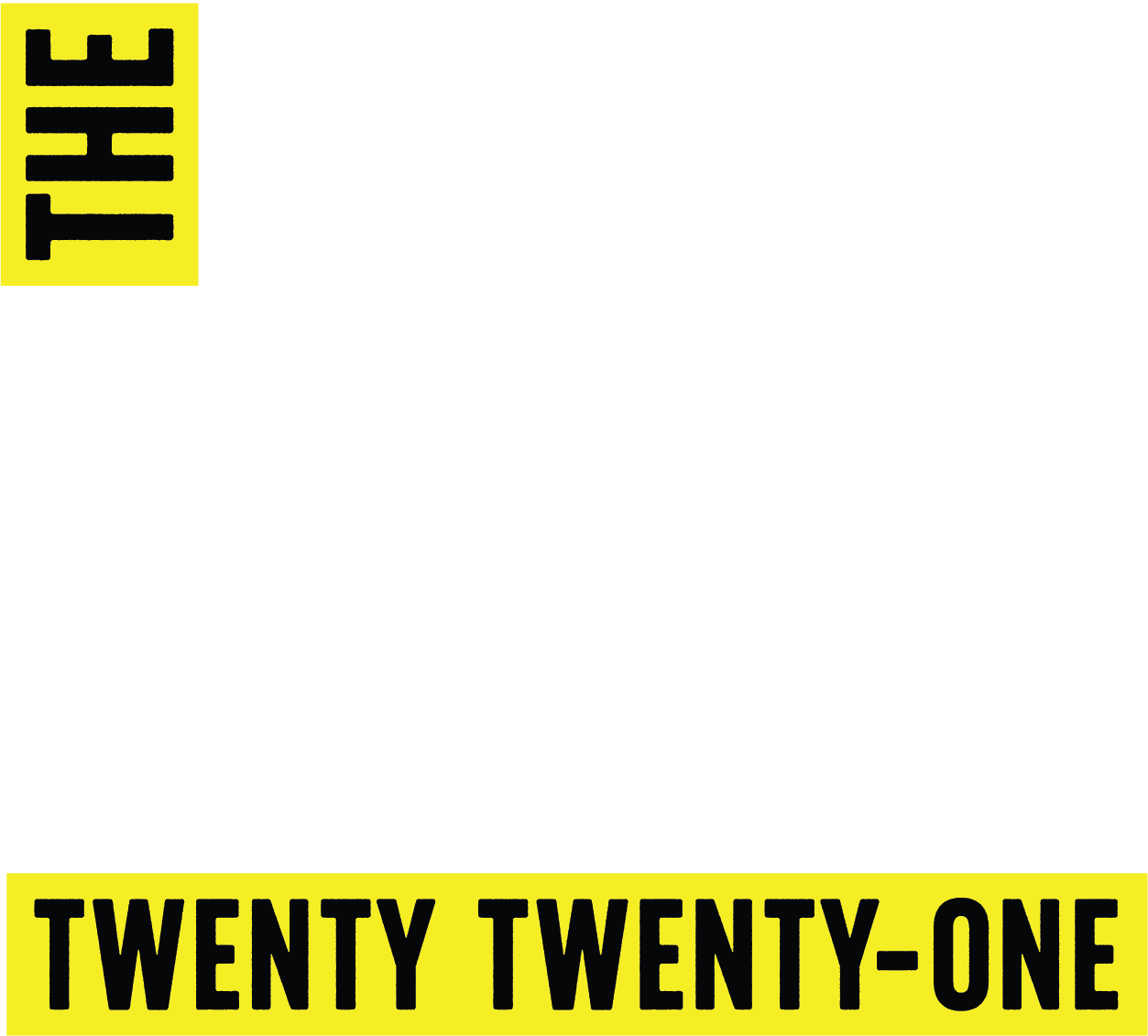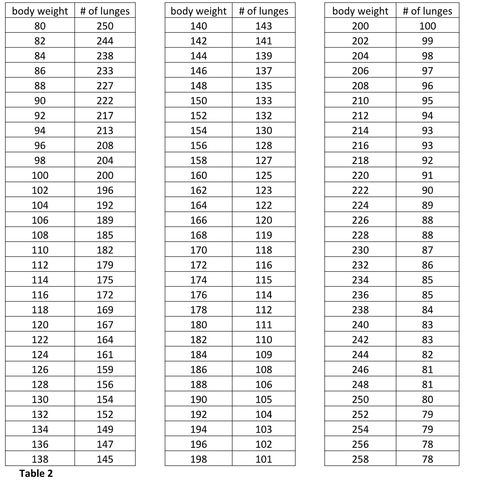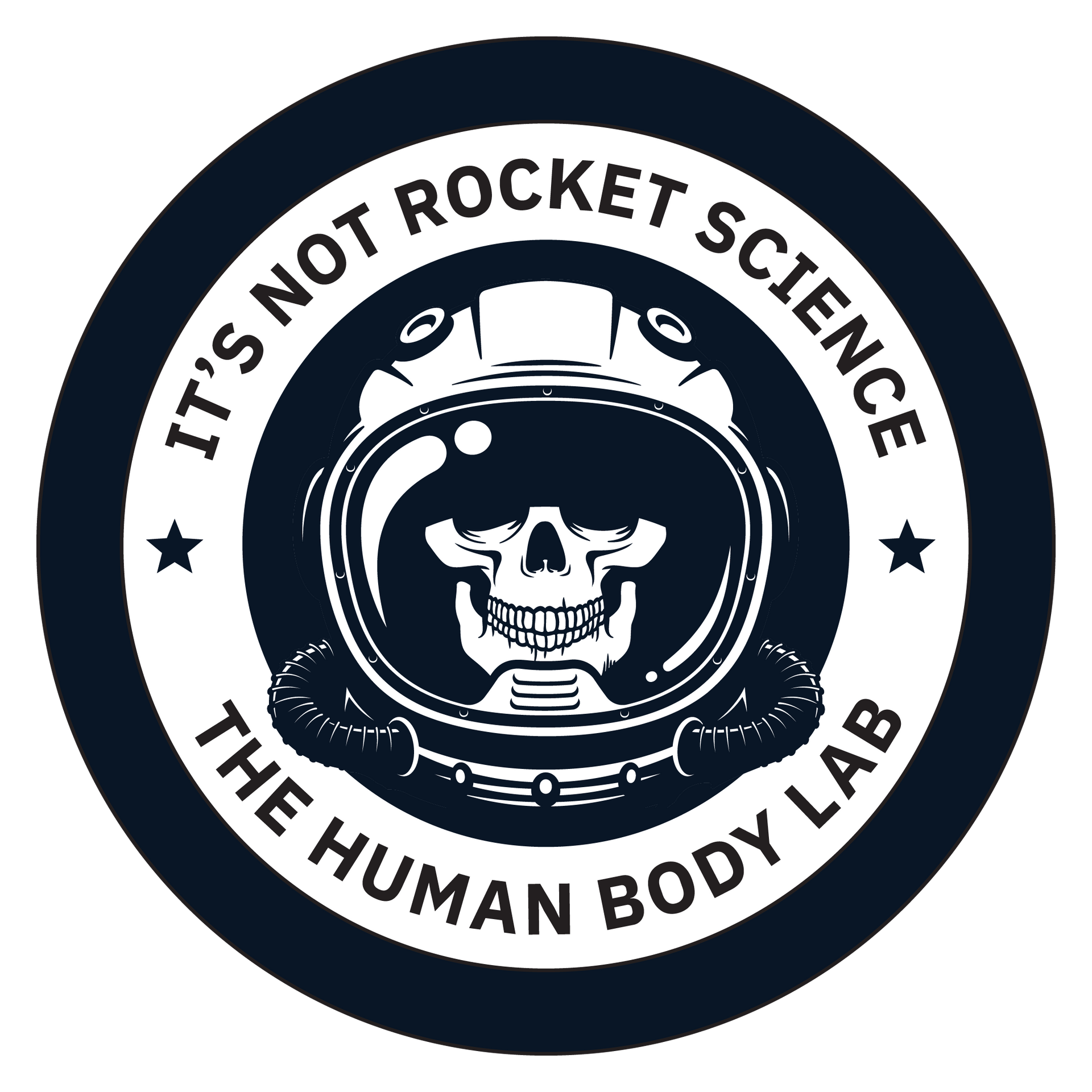The Human Race is your very own science experiment—one designed to test grit, strength, speed, and endurance.
When it comes to competitions, it seems your options are virtually limitless. Whether you're into running, endurance, strength, or skill-based competitions like gymnastics or technical lifts—you can find your cup of tea almost anywhere. It is much more difficult to find a race or competition designed to give competitors a fair shot regardless of weight, age, gender, or stature. From this frustration, The Human Race was born.
Some of these tests you will find easy as they play toward your skill base. Some you will find challenging. Just like every human, every test is different. Several tests will have rules designed to standardize the event, making the playing field as even as possible. Whether you are a Thoroughbred or a Clydesdale, The Human Race is for you.
The Human Race consists of 8 different tests completed over two weeks. You will submit two tests every four days. You can perform both tests on one day or spread them out over separate days. Each test will assess either your cardiovascular endurance, anaerobic capacity, or muscular strength and endurance. All of them will test your tenacity and grit.
Race Components
The eight tests of The Human Race are:
- 5K for Time
- Deadlift & Lunge for Time
- 400m for Time
- 5 Minutes of Butt-to-Bucket Goblet Squats
- 50 Hand-Release Doorway Burpees for Time
- Heavy Carry & Crawl
- Broad Jumps for Distance
- The Very Worst Mile
Registration
Registration cost starts at $10 at Human Body Lab's Teespring. Simply pick up any piece of swag available for purchase, and your registration fee is complete—plus you snag swag you actually want to use! Once you pay, we’ll email you a waiver and other registration information to complete the process. After registering, you will be ranked on The Human Race Leaderboard and have a chance to earn a spot on the podium.
Prizes
The top 3 male and female finishers in each division will win the coveted HBL medal and bragging rights.
Equipment
Required Materials:
- One 5-gallon bucket with a lid, in addition to some form of weight, to put in the bucket.
- Example with an estimated cost: one bucket and lid ($5.00) + one bag of gravel ($3.50).
- Total cost: $8.50
- One 5-gallon bucket full of water which weighs 42 lbs
- One standard construction tape measure
Optional Materials:
- Sandbag
- Barbell and plates
- Dumbbells
- Kettlebells
- Timer and/or stopwatch
Submission Details and Procedures
Competitors must submit all test results at humanbodylab.com/results. Also upload your results to Instagram tagging @thehumanbodylab with the hashtag #hblthehumanrace.
Competitors will submit two tests every four days. Tests may be attempted as many times as you want in the testing window. Submit only your best mark at humanbodylab.com.
Submission Date: 3/4
- 5K for Time
- Deadlift & Lunge for Time
Submission Date: 3/7
- 400m for Time
- 5 minute of Butt-to-Bucket Goblet Squats
Submission Date: 3/10
- 50 Hand-Release Doorway Burpees for Time
- Heavy Carry & Crawl
Submission Date: 3/14
- Broad Jumps for Distance
- The Very Worst Mile
No Sour Grapes Clause
Since the COVID-19 outbreak, we have seen many virtual events. There is no fair way to assess every competitor for each event without on-site judges. The tests of The Human Race are designed to remove as many subjective variables as possible. You may think someone has cheated, and at some point, someone will think you have. At the end of the day, this is a challenge of you against yourself. There will be no official viewing of videos to verify an athlete’s performance.
Scoring
Scoring
This scoring system will involve a 100-point system for each test. The winner will receive 100 points. Points will, after that, decrease by 5 points per place.
- 1 st - 100 pts.
- 2 nd - 95 pts.
- 3 rd - 90 pts.
- 4 th - 85 pts.
- 5 th - 80 pts.
- 6 th - 75 pts.
- 7 th - 70 pts.
- 8 th - 65 pts.
- 9 th - 60 pts.
- 10 th - 55 pts.
- *11 th - N th 50 pts.
*To limit the chance of one test having too significant an impact on the overall results, no one
person will receive a score lower than 50 points. For example, 11 th and 20 th will receive the same
score of 50 points.
**In the case of a tie, points will be divided among the individuals. For example, if two
individuals tie for 5 th , the points for 5 th and 6 th will be shared. Each will earn (80+75)/2 = 77.5 pts.
Testing Standards
Test #1: 5K for Time
Test Focus: Aerobic Capacity
- Choose a course, track, or treadmill. Note: If you are using a motorized treadmill, the treadmill must be set at 1% to simulate the road.
- Run 5K (3.1 miles/12.5 laps on a standard track).
- Post your results on humanbodylab.com/results.
- To legitimize your results and quiet the cynics, post a photo of your results to Instagram as evidenced on your watch screen, phone app, or a treadmill, tagging @thehumanbodylab with the hashtag #hblthehumanrace.
Submission Date: 3/4
Test #2: Deadlift & Lunge for Time
Test Focus: Muscular Strength & Endurance
- You will complete two rounds of deadlifts and lunges.
- You must complete the deadlift followed by lunges before returning to the second round of deadlift and lunges.
- The total deadlift weight for each round will be ten times your body weight split into reps. The lunge portion will be 20,000 lbs. of walking lunges using only your own body as weight. This may sound crazy, but once you do the math, it is more realistic than it sounds.
- Post your results on humanbodylab.com/results.
- To legitimize your results and quiet the cynics, post your results, and a video of your workout on Instagram tagging @thehumanbodylab with the hashtag #hblthehumanrace.
Deadlift Standard: Choose any weight you want and deadlift it until you reach 10 times your body weight. For example, a 100 lbs. person will deadlift 1,000 lbs. This could be 50 lbs. x 20 reps or 100 lbs. x 10 reps; both equal 1,000 lbs. A 200 lbs. person will deadlift 2,000 lbs. Table 1 lists the total weights for each bodyweight. Choose any object you want to deadlift. It can be a barbell, dumbbell or two, kettlebells or your bucket, etc. The weight must start from the ground, and you must stand fully upright with hips extended and return the weight to the ground. If using a bucket, you absolutely cannot use the bucket handle but must grab the bucket from the ridges that are near the top. Dumbbells may be turned upright to increase the height, and those with barbells may use any standard plates.
Lunge Standard: The only weight you will use in this portion of the test is you. You will lunge until you have lunged 20,000 lbs. For example, a person that weighs 100 lbs will have 200 lunges. 200 x 100 lbs = 20,000 lbs. A person 200 lbs will do 100 lunges. The heavier you are, the less you do. The down knee must touch the ground, and the body must come to full extension at the top. To ensure your full extension, both of your feet must be on the ground at the top of the movement—no stepping through. Table 2 lists the total number of lunges for each bodyweight.
Submission Date: 3/4
Test #3: 400m for Time
Test Focus: Anaerobic Capacity
- Choose a course, track, or treadmill and run 400m (0.25 miles or one lap on a standard track). Note: If you are using a motorized treadmill, the treadmill must be set at 1% to simulate the road.
- Post your results on humanbodylab.com/results.
- To legitimize your results and quiet the cynics, post a photo of your results to Instagram as evidenced on your watch screen, phone app, or a treadmill, tagging @thehumanbodylab with the hashtag #hblthehumanrace.
Submission Date: 3/7
Test #4: 5 Minutes of Butt-to-Bucket Goblet Squats
Test Focus: Muscular Strength & Endurance
- Complete five continuous minutes of squats.
- The score is total weight = weight x reps. For example, a 25 lbs. dumbbell x 100 reps = 2,500 lbs. A 40 lbs dumbbell x 64 reps = 2,560 lbs. There is some strategy here. Do you want to hold a 100 lbs kettlebell for sets, or rep out a 10 lbs kettlebell, non-stop? If you are 6’4" you may have figured out this is a bit more challenging than for someone 5’4”. Table 3 lists the equation when calculating your total squatted weight.
- Post your results on humanbodylab.com/results.
- To legitimize your results and quiet the cynics, post your results, and a video of your workout on Instagram tagging @thehumanbodylab with the hashtag #hblthehumanrace.
Goblet Squat Standard: You will hold a known weighted object of your choice in front of you with two hands at chest height. The item you hold is your choice. Some options are a dumbbell or kettlebell, a gallon jug of water, or a second 5-gallon bucket. You must hold the item with both hands (for example, on the sides of the bucket). No bear hugging allowed. You will squat until your tailbone touches the bucket and return to a full hip extended position.
Submission Date: 3/7
Table 3: Goblet Squat Calculation Instructions
The Equation: Weight chosen x # of reps = total weight.
Example #1:
- Weight chosen: 25 lbs dumbbell
- Number of reps: 87
- 25 lbs x 87 = 2,175 lbs
Example #2: - Weight chosen: 80 lbs dumbbell
- Number of reps: 34
- 80 lbs x 34 = 2,720 lbs
Test #5: 50 Hand-Release Doorway Burpees for Time
Test Focus: Anaerobic Capacity & Power
- This test is intentionally made to be fast and furious. Using the doorway helps to standardize burpee form.
- You will complete 50 burpees touching the top of a standard height door jam or garage
- door for time.
- Post your results on humanbodylab.com/results.
- To legitimize your results and quiet the cynics, post your results, and a video of your workout on Instagram tagging @thehumanbodylab with the hashtag #hblthehumanrace.
Burpee Standard: In this event, the burpee starts from the chest on the ground and hands above the floor. The person will then jump to a standing position and then a jump or reach to touch a door jam. Depending on your height, you may or may not need to jump. When you return to the ground, your chest must touch the ground, and your hands must leave the ground; this ensures that each burpee starts on the ground and reaches full hip extension at the top.
Submission Date: 3/10
Test #6: Heavy Carry & Crawl
Test Focus: Muscular Strength & Endurance
- The Carry & Crawl has two components. The bucket carry is a great test of core and grip strength, along with mental tenacity.
- You will carry a bucket using a bear hug grip with the weight of your choice. The minimum bucket weight is 25 lbs, but heavier is better if you want to score higher in this one. You will carry a bucket 25 ft, back and forth, until you must set it down. Once you set the bucket down or reach 5 minutes, you are finished.
- During the bear crawl portion, crawl 25 ft as many times as you can for 5 minutes.
- Post your results on humanbodylab.com/results.
- To legitimize your results and quiet the cynics, post your results, and a video of your workout on Instagram tagging @thehumanbodylab with the hashtag #hblthehumanrace.
Carry Standard: You will mark-off 25 ft (which happens to be the length of a standard tape measure). The bucket must be held across the middle of the bucket, in a bear hug position, without one hand holding onto the other hand or wrist. You may not hold the bucket on the bottom. You may not clasp one hand on the other. Count how many full rounds you can carry before setting it down. There is a 5 minute time cap of this portion of the event. Your score is the # of rounds x 25 ft x weight. To standardize the event, you will load a 5-gallon bucket with a minimum of 25 lbs, and there is no maximum. Table 4 includes an equation and example to calculate the total weight.
Crawl Standard: The goal of this event is the max distance crawled over 5 minutes. Use the same markings you used for your carry. It’s great if you are willing to crawl with proper form, keeping the back flat and the spine neutral. Or, just let'er rip and hope for the best. It is all about the time. No crawling on your knees. Stop when you need to rest. Table 5 includes an equation and example to help calculate the total distance crawled.
Submission Date: 3/10
Table 4: Heavy Carry Total Weight Calculation Instructions
The Equation: # of rounds x 25 ft x weight
Example #1:
- Weight chosen: 30 lbs bucket
- Number of rounds (@25’): 17
- 30 lbs x 17 x 25’ = 12,750 lbs
Example #2:
- Weight chosen: 80 lbs bucket
- Number of reps: 10
- 80 lbs x 10 x 25’ = 20,000 lbs
Table 5: Total Distance Crawled
The Equation: # of rounds x 25’
Example:
- # of rounds in one direction: 26
- Distance: 25 ft
- 26 x 25 = 650’
Test #7: Broad Jumps for Distance
Test Focus: Power
- The broad jump is an excellent measurement of power. This test will measure both your power and, later in the test, your muscular endurance.
- Jump 250 ft in as few single broad jumps as possible—3-minute time cap.
- Post your results on humanbodylab.com/results.
- To legitimize your results and quiet the cynics, post your results, and a video of your workout on Instagram tagging @thehumanbodylab with the hashtag #hblthehumanrace.
Broad Jump Standard: You will need to mark off 25 ft, which happens to be the length of a standard tape measure. You will broad jump down and back five times for a total of 250 ft. Keep track of how many jumps it takes. The lower the number of jumps, the better. Every jump is a single jump; you must stop between jumps to recoil—and no bunny hopping. It is not about the speed, but the distance. Once the event starts, you must continue by taking only enough time to rebound and recoil and jump. If you jump 24 ft, you need to jump one more time. Even if it is only 1 foot. Count all jumps. If you stumble forward, you must step back to where the jump initially ended. No stepping forward to gain momentum. You cannot jump 250 ft straight without turning around.
Submission Date: 3/14
Test #8: The Very Worst Mile
Test Focus: Mental Tenacity
- This will suck.
- Start your timer for a minute, start a separate stopwatch, and then start your run.
- Every minute, perform five hand-release pushups on the odd minutes, and five frog jumps on the even minutes.
- Post your results on humanbodylab.com/results.
- To legitimize your results and quiet the cynics, post your results, and a video of your workout on Instagram tagging @thehumanbodylab with the hashtag #hblthehumanrace.
The Very Worst Mile Standard: Do not stop your timer during pushups or frog jumps. If they take you 30 seconds, then you only get 30 seconds to run that minute. You can run on the road, track, or treadmill. If you are running on a treadmill, you must stop the treadmill during the pushups and jumps. Your score will be your total time to run the mile. There is no need to keep track of the number of sets of push-ups or jumps. Those are there to challenge your mental grit.
Submission Date: 3/14




